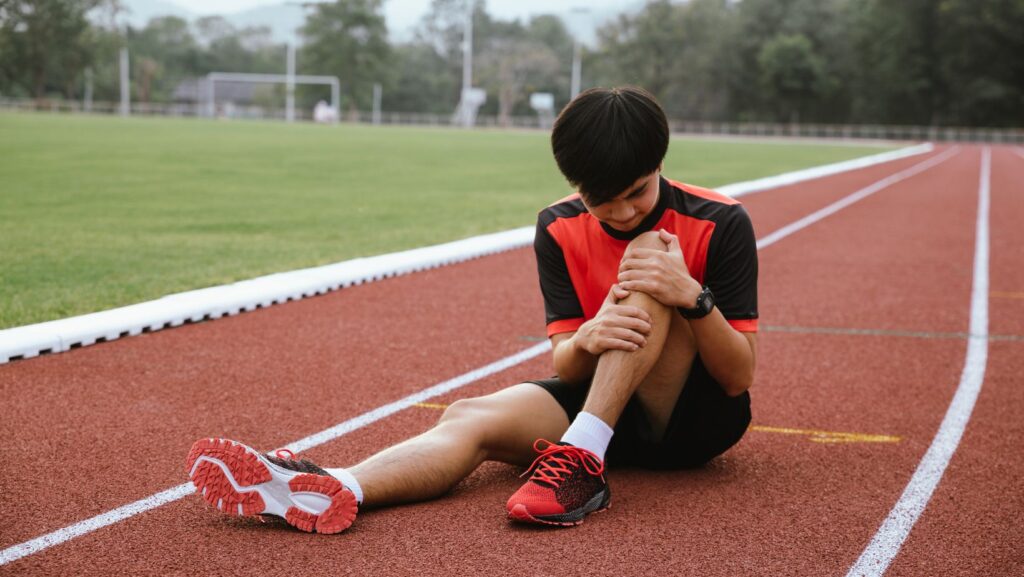Sports are more than just games for young athletes—they’re platforms for growth, challenge, and personal accomplishment. However, with the thrill of the game comes the risk of injury, which can sideline even the most promising young stars.
In this article, we’ll dive into some of the most common injuries that young athletes face. This will include everything from turf toe to shoulder injuries. We’ll explore their causes and, most importantly, effective treatments. This will keep your young athletes safe and thriving on the field.
Let’s dive in!
Turf Toe
Turf toe isn’t just a small issue—it can be a big barrier for athletes, especially the younger ones who play sports on hard surfaces. This injury is a sprain at the base of the big toe. It occurs during sports activities when an athlete makes a forceful motion with their foot, like sprinting or jumping.
Treatments:
Professionals recommend many effective treatments for managing turf toe. But it’s crucial for anyone experiencing symptoms to consult with a healthcare provider first. This is because they can do and then tailor a treatment plan that best suits the individual’s specific needs. Here are some commonly advised treatments by them:
- Medicine: Use anti-inflammatory medications like ibuprofen or naproxen or pain relievers like acetaminophen, as directed by your doctor.
- Cold and Heat: Apply ice for 10-15 minutes every 2-3 hours for swelling. Also, use heat before stretching or strengthening exercises.
- Orthopedic Aids: Wearing stiff-soled shoes with a wide toe area. Taping the big toe or using a boot may help in more severe cases.
- Exercises: Performing gentle range-of-motion and strengthening exercises that help improve flexibility.
Ankle Sprains
An ankle sprain happens when the ligaments that support the ankle stretch or tear. This injury usually occurs when the foot rolls or twists awkwardly.

These movements can overstretch the ligaments, leading to pain, swelling, and sometimes bruising.
Treatments:
There are several different strategies by which ankle sprain can be treated. Here are some of the most common ones.
- Immobilization: Using a brace or splint to keep the ankle stable and prevent further injury.
- Manual Therapy: Techniques like massage can help reduce stiffness and improve mobility.
- Balance Exercises: Focusing on activities that enhance balance and stability to prevent future sprains.
- Return-to-Sport Program: Gradually reintroducing sport-specific drills to ensure the ankle is ready for full activity.
Shin Splits
Shin splints refer to pain along the shinbone, typically caused by overuse. This injury often occurs when athletes ramp up their training intensity too quickly. Improper footwear and poor running technique can also contribute to the development of shin splints.
Treatments:
Treating shin splints effectively involves a combination of rest, supportive care, and exercises to relieve pain and prevent future issues. Let’s explore some key strategies:
- Activity Modification: Reducing or temporarily stopping high-impact activities like running to allow the shin to heal.
- Supportive Footwear: Wear shoes with good arch support and cushioning to reduce strain on the shins.
- Cross-Training: Engaging in low-impact activities like swimming or cycling to maintain fitness while avoiding further stress on the shins.
- Stretching and Strengthening: Focus on exercises that stretch and strengthen the calf muscles and lower leg to support recovery and prevent recurrence.
ACL Injuries
An ACL injury occurs when the anterior cruciate ligament (ACL) in the knee gets stretched or torn. This often happens during activities that involve quick pivots, sudden stops, or awkward landings after a jump.

Athletes might hear a popping sound at the time of injury and experience immediate swelling and instability in the knee. In cases where conservative treatments are ineffective, knee arthroplasty in Singapore may be recommended to restore function and alleviate pain, allowing athletes to return to their sport more effectively.
Treatments:
Recovering from an ACL injury requires a well-structured and carefully managed approach. Here are some of the most effective ones:
- Knee Bracing: Wearing a knee brace can provide support and stability to the injured knee, especially during the early stages of recovery.
- Rehabilitation Exercises: Engaging in a structured rehab program with exercises focused on restoring strength, flexibility, and stability to the knee.
- Surgical Options: In cases of a complete tear, surgery may be necessary to reconstruct the ACL, followed by a comprehensive rehab program.
- Gradual Return to Activity: Slowly reintroducing physical activity with a focus on sport-specific movements to ensure the knee is ready for full participation.
The Takeaway
Treating common sports injuries in young athletes is crucial for their long-term health and success in sports. By following appropriate treatment plans, young athletes can recover fully and get back to doing what they love. Consistent care and attention during recovery can make all the difference in their athletic journey. Remember, ensuring a safe and strong return to sports is always worth the effort!
